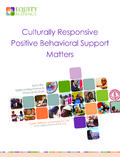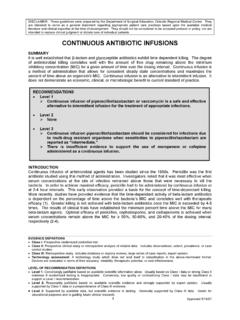Transcription of Texas Continuous Improvement - TCDSS
1 Texas Continuous Improvement Framework Creating Sustainable Transformation The Texas Continuous Improvement Framework is designed to Framework also identifies critical success factors and a cycle of establish the foundational systems, actions, and processes to Continuous Improvement that, when fully implemented, results in support the Continuous Improvement of Texas school districts and accelerated achievement and positive results for students. campuses. The framework offers a common language for approaching and aligning the work of Continuous Improvement Changing adult behaviors and improving student outcomes for all campus and district accountability systems and measures. requires careful planning and purposeful actions based on Through this framework, support and technical assistance can be analyzing data, determining needs, developing targeted plans for coordinated, while still differentiated based on identified needs.
2 Improvement , and monitoring the implementation and impact of those plans to ensure a focused, data-driven approach. The framework provides school districts with clearly articulated commitments and support systems needed to engage in All compoent levels of the framework (district commitments, thoughtful and collaborative school and district Improvement . support systems, and critical success factors) are designed to work Developed through synthesizing decades of school Improvement together through a cycle of Continuous Improvement to produce and turnaround research, The Texas Continuous Improvement systemic transformation. Framework for Continuous District and School Improvement What are the essential foundations for success? COMMITME. ISTRICT NTS. D. PORT SYSTEMS. SUP. L SUCCESS FACT OR. TICA OR. ITY. CRI. G. OP. S. BIL. ER. AN. AT. TA. Y. S. PE AC. IZA. LIT. CE. ION. UN. R. UA. TIO. UR. AD RM. CCO. AL.
3 FO. ESO. Q. NA. EM AN. ER. ACCELERATED. FLE. ND A. L ST. IC CE. CH. DR. ACHIEVEMENT. TEA. XIBIL. RUC. Y AN. ICT-WIDE OWNERSHIP A. ITY. TURE. CAPACIT. TO DR. USE O INSTRU ATA. SCHOOL CLIMATE. IVE. F QUALITY D. Continuous . Improvement . IT Y. T RAN. CTION. A BIL. SYS O R. CLEAR. DISTR. M. SF. IN. TE. MA TA. S. TI O SU. ES S. N. V. EN. ISI. FA ENG. T IV. ON. M. / EC. ILY. AG CO M. AN. FF. E. EM M HI. P. D. CO. EN U N I S. F. ER. T TY S. OC. M. RE. UN D U. L EA. M. ED. US. IC I N C R EA S E D C. GH AT LEARNING TIME RO. IO. HI. EX NS S/P. PE CE SSE. CT. ATI PRO. O NS. CY. RG E N. SENSE OF U. The Texas Continuous Improvement Framework is built on a foundation of district commitments and support systems, and recognizes the importance of a systemic approach to Improvement with an emphasis on the critical success factors (CSFs) and best practice research for Improvement planning. The Continuous Improvement process of data analysis, needs assessment, targeted planning, implementation, and monitoring leads to improved student outcomes.
4 By taking a holistic approach, the framework leads to and prepares districts and campuses for accelerated achievement, system transformation, and sustainability. COMMITME. ISTRICT NTS. D. PORT SYSTEMS. SUP. L SUCCESS FACT OR. TICA OR. ITY. CRI. G. OP. S. BIL. ER. AN. AT. TA. Y. S. PE AC. IZA. LIT. CE. ION. UN. R. UA. TIO. UR. AD RM. CCO. AL. FO. ESO. Q. NA. EM AN. ER. ACCELERATED. FLE. ND A. L ST. IC CE. CH. DR. ACHIEVEMENT. TEA. XIBIL. RUC. Y AN. ICT-WIDE OWNERSHIP A. ITY. TURE. CAPACIT. TO DR. USE O INSTRU ATA. SCHOOL CLIMATE. IVE. F QUALITY D. Continuous . Improvement . IT Y. T RAN. CTION. A BIL. SYS O R. CLEA. DISTR. M. SF. IN. TE. MA S. TA. SU. R. TI O. ES S. N. V. EN. ISIO. FA ENG. T IV. M. NA. /. EC. ILY. AG CO M. FF. E. N. EM M IP. D. CO. EN U N I SH. FO. R. S. T TY DE. M. RE. UN L EA U. CU. M. IC I N C R EA S E D ED. S. AT C. GH IO LEARNING TIME RO. HI. NS /P. EX. PE ES S ES. CT. ATI P ROC. O NS.
5 CY. RG E N. SENSE OF U. District Commitments Operational Flexibility The district permits the shifting of resources, processes, and practices in response to the critical needs that have been identified. The district's ability to address the needs of all students is contingent upon allowing customized approaches, expedition of resources, and departures from standard practice when the need is substantiated (Bottoms & Schmidt-Davis, 2010); (Fullan, 2010). Clear Vision and Focus The district strongly articulates a focus on student achievement as its primary work. Clear plans and systems, aligned to that vision, are developed to address increasing performance for all students within the district. The vision is integral and embedded in daily practice and is the driver of Improvement by all staff members (Kouzes & Posner, 2007); (Hargreaves, 2013). Sense of Urgency The district, compelled by an intolerance of failure and dissatisfaction with deficits of the current state, sets a priority and presses for rapid action to change ineffective practices and processes that impede student success (Bambrick-Santoyo, 2012); (Kouzes &.)
6 Posner, 2007); (Dufour & Marzano, 2011). High Expectations Explicit, rigorous standards are in place for student learning with all stakeholders confident that success is attainable. These expec- tations are pervasively evident and understood by all with a commitment to providing a timely response and/or adjustment when goals are not met (Bambrick-Santoyo, 2012); (Kouzes & Posner, 2007); (Dufour & Marzano, 2011). District-Wide Ownership and Accountability The district leadership recognizes and accepts responsibility for all current levels of performance and transparently interacts with stakeholders to plan and implement Improvement initiatives. The district is engaged in Continuous review of systemic, district- wide practices to ensure effective impact on critical need areas, such as low-performing campuses (Zavadsky, 2012); (Fullan, 2010). COMMITME. ISTRICT NTS. D. PORT SYSTEMS. SUP. L SUCCESS FACT OR.
7 TICA OR. ITY. CRI. G. OP. S. BIL. ER. AN. AT. TA. Y. S. PE AC. IZA. LIT. CE. ION. UN. R. UA. TIO. UR. AD RM. CCO. AL. FO. ESO. Q. NA. EM AN. ER. ACCELERATED. FLE. ND A. L ST. IC CE. CH. DR. ACHIEVEMENT. TEA. XIBIL. RUC. Y AN. ICT-WIDE OWNERSHIP A. ITY. TURE. CAPACIT. TO DR. USE O INSTRU ATA. SCHOOL CLIMATE. IVE. F QUALITY D. Continuous . Improvement . IT Y. T RAN. CTION. A BIL. SYS O R. CLEA. DISTR. M. SF. IN. TE. MA S. TA. SU. R. TI O. ES S. N. V. EN. ISIO. FA ENG. T IV. M. NA. /. EC. ILY. AG CO M. FF. E. N. EM M IP. D. CO. EN U N I SH. FO. R. S. T TY DE. M. RE. UN L EA U. CU. M. IC I N C R EA S E D ED. S. AT C. GH IO LEARNING TIME RO. HI. NS /P. EX. PE ES S ES. CT. ATI P ROC. O NS. CY. RG E N. SENSE OF U. Support Systems Organizational Structure The organizational structure has clearly delineated roles and responsibilities for personnel that focus on teaching and learning, ac- countability, and impact on student achievement.
8 District and campus leaders eliminate barriers to Improvement , redefine staff roles and responsibilities as necessary, and empower staff to be responsive in support of Improvement (Dufour & Marzano, 2011);. (Bottoms & Schmidt-Davis, 2010); (Fullan, 2010); (Honig, Copeland, Rainey, Lorton, & Newton, 2010). Processes/Procedures Priority is placed upon teaching and learning when establishing and implementing systemic operational protocols that guarantee accountability, availability of resources, and their effective use (Bottoms & Schmidt-Davis, 2010); (Levine, 2013). Communication A clearly defined process exists that ensures a consistent message is being sent, received, and acted upon using multiple, effective delivery systems. Proactive efforts are engaged by district and campus-level staff to establish successful internal communication systems and transparent external communication practices. Communication is focused on a shared and clear vision for Continuous Improvement which streamlines collaborative efforts toward student success (Kouzes & Posner, 2007); (Dufour & Marzano, 2011).
9 Capacity and Resources The organization strategically utilizes internal and external human capital and necessary resources to meet all needs for a successful learning environment. Expertise is purposefully cultivated and sustained through targeted recruitment, retention, and succession planning (Hargreaves, 2013); (Bottoms & Schmidt-Davis, 2011). Key Components of a Successful School How are interventions, resources, and support customized for the campus? The research is clear, whether interventions are being provided through the district, local education service center (ESC), Texas Education Agency (TEA), or Texas Center for District and School Support ( TCDSS ), sharing a common language around resources is essential. The Texas Continuous Improvement Framework, including the seven critical success factors (CSFs), provides a common language to anchor the work of school Improvement across Texas and create opportunity to match resources to needs.
10 COMMITME. ISTRICT NTS. D. PORT SYSTEMS. SUP. L SUCCESS FACT OR. TICA OR. ITY. I G. OP. CR S. BIL. ER. AN. AT. TA. Y. S. PE AC. IZA. LIT. CE. ION. UN. R. UA. TIO. UR. AD RM. CCO. AL. FO. ESO. Q. NA. EM AN. ER. ACCELERATED. FLE. ND A. L ST. IC CE. CH. DR. ACHIEVEMENT. TEA. XIBIL. RUC. Y AN. ICT-WIDE OWNERSHIP A. ITY. TURE. CAPACIT. TO DR. USE O INSTRU ATA. SCHOOL CLIMATE. IVE. F QUALITY D. Continuous . Improvement . IT Y. T RAN. CTION. A BIL. SYS O R. CLEAR. DISTR. M. SF. IN. TE. MA S. TA. TI O SU. ES S. N. V. EN. ISIO. FA ENG. T IV. M. NA. /. EC. ILY. AG CO M. FF. E. ND. EM M HI. P. CO. EN U N I S. F. ER. S. T TY. OC. M. RE. D. UN L EA DU. M. US. IC. AT. I N C R EA S E D. O CE. GH LEARNING TIME. IO / PR. HI. EX NS S ES. PE C ES. CT. ATI PRO. O NS. CY. RG E N. SENSE OF U. Critical Success Factors (CSFs). The following success factors are foundational elements within the framework developed by TEA and TCDSS .



